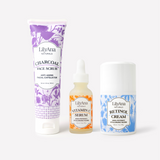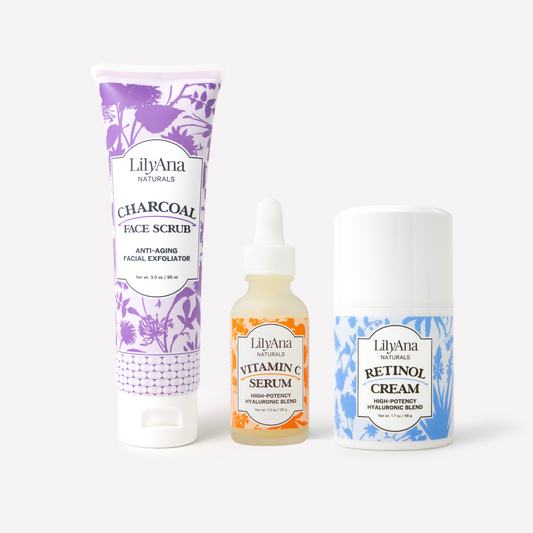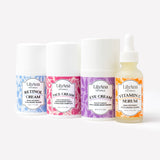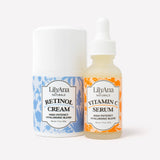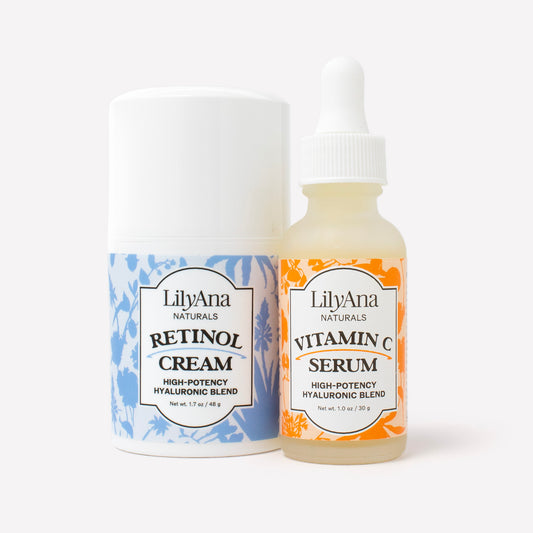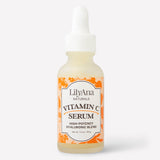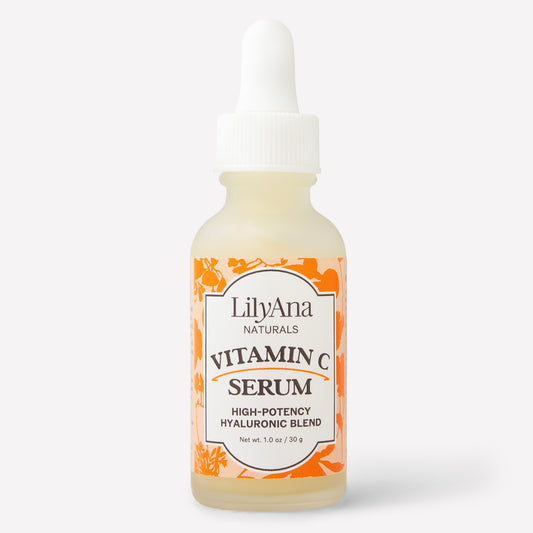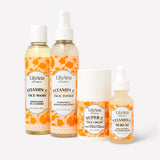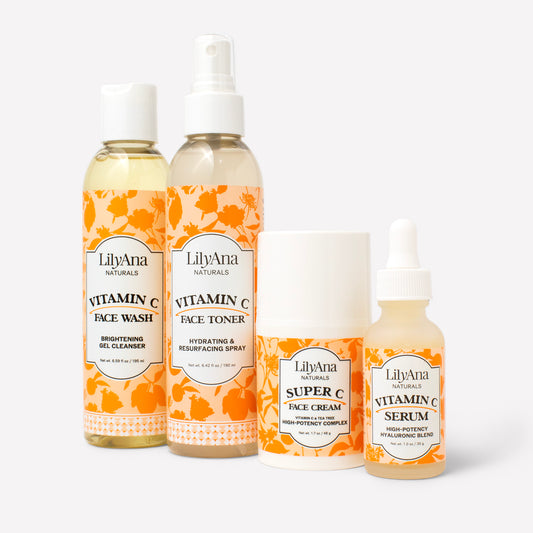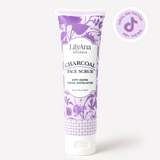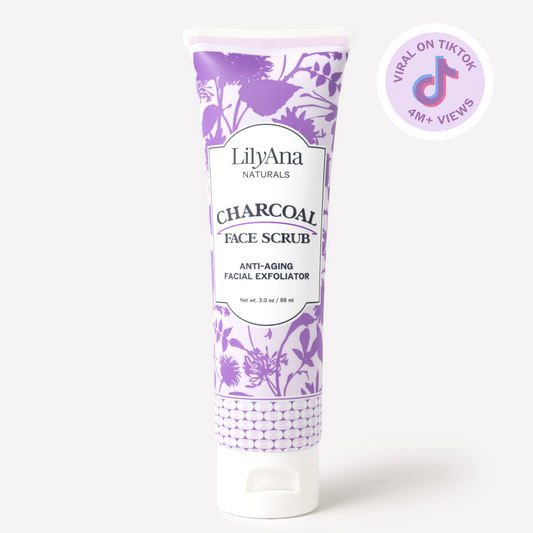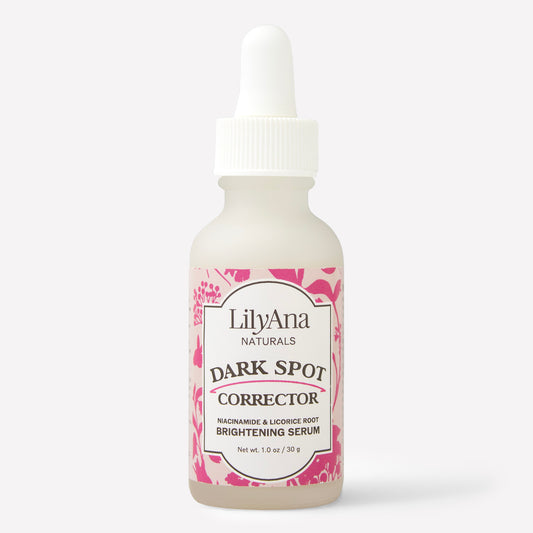Acne is the most common skin condition in the United States, according to The American Academy of Dermatology.
Acne pops up when the tiny holes in your skin, called pores, become clogged with dirt, oils, dead skin cells, and bacteria. Individually, these clogged pores are called pimples. When bigger sections of pores are clogged, it’s considered an acne breakout.
And is there anything more frustrating than an acne breakout? We didn’t think so. Just when you get it under control in one place, it pops back up in another. But have you ever considered what your breakout might be telling you about your health?
Keep scrolling for a complete acne location guide. Below, we look at what causes acne, why it appears in certain places on our bodies, and how we can prevent acne from popping up in the first place.

What Causes Acne?
Your skin contains millions of pores, each of which consists of a hair and an oil gland called a sebaceous gland. This gland routinely releases the oil that lubricates your skin and keeps it feeling soft.
Unfortunately, things don’t always work as they are supposed to. Sometimes, the follicles produce too much oil. Other times, pores trap the dead skin cells that are constantly shedding from your skin. In either case, a buildup of the common skin bacteria known as Cutibacterium acnes typically follows.
When bacteria multiply in a clogged pore, the oil produced by the sebaceous gland is unable to escape. This leads to the pore becoming blocked, which in turn forms a pimple, or zit.
Though many people believe certain foods like chocolate and fries contribute to acne breakouts, there is not any scientific evidence to support this claim. More likely contributors to oil and bacteria buildups include:
- genetics
- medications like corticosteroids, lithium, phenytoin, and anabolic steroids
- a diet high in carbohydrates and refined sugars
- hormonal fluctuations like those which occur during puberty and pregnancy
- stress
- the skin environment caused by sweating, tight clothing, humidity, and friction
Different Acne Types
There are six main types of acne. Most, like whiteheads and blackheads, occur commonly and are little more than minor annoyances. Others are more painful and come with a risk of scarring. Any of the six can appear anywhere on your body.
-
Whitehead: The medical name for this common zit is comedone. Whiteheads have a white appearance because they are closed right below the surface of the skin. They don’t typically get inflamed, aren’t painful, and are not likely to scar.
-
Blackhead: A blackhead is another type of comedone. Blackheads are open at the surface of the skin, and because of oxygen in the air tend to look as if they are black. Like whiteheads, blackheads are annoying, but not a cause for concern.
-
Papules: Papules are small solid bumps caused by inflamed or infected hair follicles. They most frequently appear on the legs, or in the pubic area and armpits.
-
Pustules: As their name suggests, pustules are red blemishes that contain pus just underneath the surface.
-
Nodules: Nodules, or “underground zits,” are solid lumps beneath the skin’s surface. They can be very painful.
- Cysts: Like pustules, cysts also consist of pus. However, cysts are usually much larger than pustules, and are almost always painful. Cystic acne can appear anywhere on the body.
Common Acne Locations: What Your Acne is Telling You & How To Get Rid of It
Pimples and acne breakouts can occur anywhere on your body, though most occur on the face.
Treating facial breakouts is called acne face mapping, and how you go about it can be determined by where on your face you are breaking out. Other common spots for acne breakouts include the back, chest, neck, and shoulders.
Forehead
Your forehead makes up the top line of your “T-zone” -- that is, the T-shaped area across your forehead and down your nose. This part of your face is especially prone to acne breakouts because it has more sebaceous glands than other areas.
To prevent forehead and T-Zone acne, it’s important to wash your face regularly -- at least twice per day, in the morning and at night before bed. An over-the-counter facial cleanser will work, especially those products that contain one or more of the following:
-
Retinoids: Topical retinoid creams and lotions are available either over-the-counter or by prescription. Retinoids are great acne fighters, but are better for long-term maintenance. If it’s spot treatment you’re after, then start with another product first.
-
Salicylic acid: Salicylic acid is very effective at breaking up dead skin cells and clearing out pores.
- Benzoyl peroxide: Benzoyl peroxide helps clear clogged-up pores, so an acne cream containing the ingredient benzoyl peroxide is the perfect place to start when trying to clear up T-zone acne. However, it may also interact negatively with other acne treatments, so try this one on it’s own first, or seek advice from your dermatologist.
Hairline
If you are experiencing pimples around your hairline, then you could have your favorite hair products to blame! Shampoos, conditioners, pomades, and styling mousses often contain large amounts of oils. When these oils find their way to your pores, cloggings and then zits could occur. Hairline pimples caused by hair care products are usually whiteheads or papules.
To get rid of this type of breakout, try to limit your product to just the ends of your tresses, avoiding your neckline and scalp. If the breakouts continue, you may need to replace the product. Look for shampoos and other products that don’t contain a ton of oil.
Chin and Jawline
The chin and jawline area of the face is another common location for acne. Though some active cell phone users find they break out around these spots, the chin and jawline are most prone to hormonal acne caused by hormonal imbalance.
Teenage boys tend to break out around the jawline during growth spurts, while women often experience a zit or two on their chins during their menstrual cycles.

Chin and jawline acne is usually deeper, bigger, and more inflamed. To treat the hormonal acne that pops up in this area of the face, try:
-
Retinoids: Consistent retinoid use can be very effective at keeping hormonal acne at bay.
-
Sulfur & Charcoal: Charcoal scrubs and topical creams containing sulfur are both very effective against deep, hormonal acne. Both varieties are available over the counter.
- Hormones: It might seem odd to fight hormones with hormones, but many women find that their chin and jawline acne disappears when they begin taking birth control pills. Hormonal birth control pills are only available as a prescription, so be sure to speak with your doctor if you are a woman who suffers from breakouts on her chin and jaw.
Cheeks
It’s not entirely clear as to why acne appears on the cheeks, though genetics could play a part in the problem. To tame cheek acne, you can spot treat using products containing benzoyl peroxide and salicylic acid.
However, the skin on your cheeks is more sensitive than on other parts of your face, so it’s important not to overuse any harsh products in this spot.
Back
Back acne -- or “bacne” as it’s come to be known -- occurs when dead skin cells and oil clog the pores on your back. Although it would be easy to believe that bacne pops up because of a lack of personal hygiene, this isn’t necessarily the case.
Rather, acne breakouts on the back happen due to genetics, hormonal changes, sweating, stress, and certain medications. The skin on your back is thicker than on other parts of your body, so tackling an acne breakout here can be a little more complicated.
Start by using an over-the-counter benzoyl peroxide foaming wash to wash your back each day. Begin with a wash containing just 5.3% benzoyl peroxide. This amount should be effective without causing irritation or dryness.
Let the wash stay on your back for about five minutes to give it enough time to penetrate the thicker skin, and clear out any clogged pores. When you are ready to rinse, be sure to do so thoroughly. Any leftover peroxide runs the risk of staining or bleaching your sheets and pillowcase once you go to bed.
If a daily wash with benzoyl peroxide doesn’t clear up the acne breakout on your back within eight weeks, then it may be worth speaking with your dermatologist for ideas about other products and strategies.
Shoulders
Of all the places to experience an acne breakout, the shoulders are one of the most uncomfortable. Shoulder acne can occur for any number of reasons, including genetics, too-tight clothing, and friction caused by the straps of a backpack or purse.
Clearing shoulder acne is similar to clearing back acne. Benzoyl peroxide and salicylic acid are effective treatments, while looser clothing and regular showers can be effective preventatives.
Chest
Unlike on the face and back, acne that breaks out on the chest area is usually environmental. Some common causes of chest acne include:
- skincare products that trap in oils and moisture
- clothing and fabrics that trap oils and moisture
- using products like soap, hygiene, and laundry detergents with harsh products
- sweating
Getting rid of chest acne may require some trial and error. If you suspect your breakouts are the result of something environmental, then you can start by switching out your soap, laundry detergent, and other hygiene products one by one.
Oftentimes, replacing a thick cream-based moisturizer with lotions labeled “non-comedogenic” will do the trick. In the meantime, wear breathable clothing, exfoliate your skin once a week, shower regularly, and avoid any products with perfumes and dyes.
Neck
Sometimes, acne breaks out on the back and sides of your neck. As with anywhere else on the body, this occurs when the pores on the neck get clogged with dead skin cells and bacteria.
Not washing your neck, especially after a big-time sweating session, is a common cause of neck breakouts. Avoid the pop-up of new pimples by showering after a workout, and using hair products that don’t contain too much oil.
Tips for Preventing Acne
As frustrating as an acne breakout can be, it’s helpful to remember that acne is a natural occurrence. Still, there are some easy preventative measures you can take to keep major breakouts at bay.
Washing your face regularly is the best defense against painful and unsightly acne breakouts. Use an oil-free cleanser to wash your face twice each day, in the morning and before bed. Foam cleansers tend to be gentler than lotion cleansers, and are better at lifting the gross stuff from the skin.
Once or twice a week, use an exfoliator to thoroughly clean out your pores. But don’t get too aggressive! Exfoliating too often can actually irritate your skin and make a breakout worse. Limit your exfoliating sessions to just once or twice a week.
Other tips for preventing acne include:
-
committing to a healthy diet with few processed foods, refined sugars, or carbohydrates
-
always showering after exercising or sweating
-
only using makeup that does not contain oil
-
washing your makeup brushes regularly to remove any lingering bacteria and oils. A gentle shampoo free of any fragrance can be used to wash brushes once every week or so
-
drinking plenty of water, as dehydration leads to dryer skin and increased production of sebum oil
-
Including makeup removal as part of your bedtime skincare routine
-
avoiding clothes that fit too tightly
- do not smoke
-
using over-the-counter acne creams to remove excess oil from your skin
- reducing stress by getting plenty of sleep, breaking large tasks into manageable steps, and exercising
Final Thoughts
Acne breakouts may be completely natural, but that doesn’t make them any less annoying. The six varying acne types can pop up anywhere on your body, and their locations almost always offer information about your overall health.
For example, an acne breakout on your chin may signal a recent change in hormones, while acne on your neck might occur after lots of sweating. Fortunately, there are a number of effective treatments for tackling those pesky acne breakouts.
Wherever you happen to be experiencing a breakout, certain over-the-counter cleansers can be effective at cleaning out any clogged pores. And easy prevention methods like washing your face twice a day can go a long way in achieving clear skin and preventing acne in the first place.
